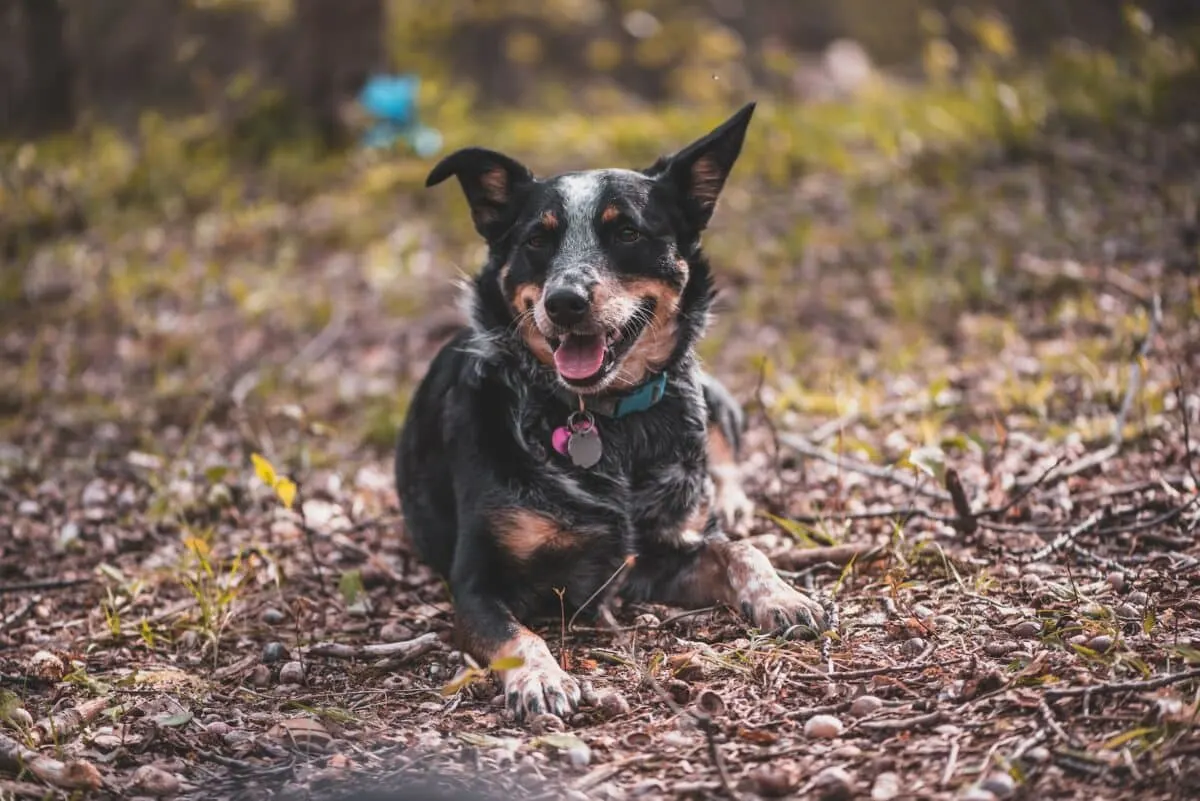This post will take you through all in the ins and outs of the Texas Heeler.

Are you ready to meet a dog breed that’s as dynamic as the state it’s named after? One that’s a mix of two of the toughest, most intelligent working breeds around?
Allow us to introduce you to the Texas Heeler – a crossbreed that’s quickly becoming a favorite among pet owners and ranchers alike.
What if we told you that this mixed breed could go from herding cattle all day long to snuggling up with your family at night? Or that they’re known for their athleticism, loyalty, and high-energy personalities? They constitute the perfect adventure partner for hiking, running, and exploring the great outdoors.
In this post, we’ll take a deep dive into the world of Texas Heelers. We’ll explore its origin, physical characteristics, temperament, and unique skills. We’ll also discuss their suitability as both a working dog and a family pet. All in all, we’ll give you all the information you need to decide if a Texas Heeler is the right breed for you.
So get ready to unleash the secrets of this dynamic crossbreed – it’s going to be a wild ride!
Origins and History
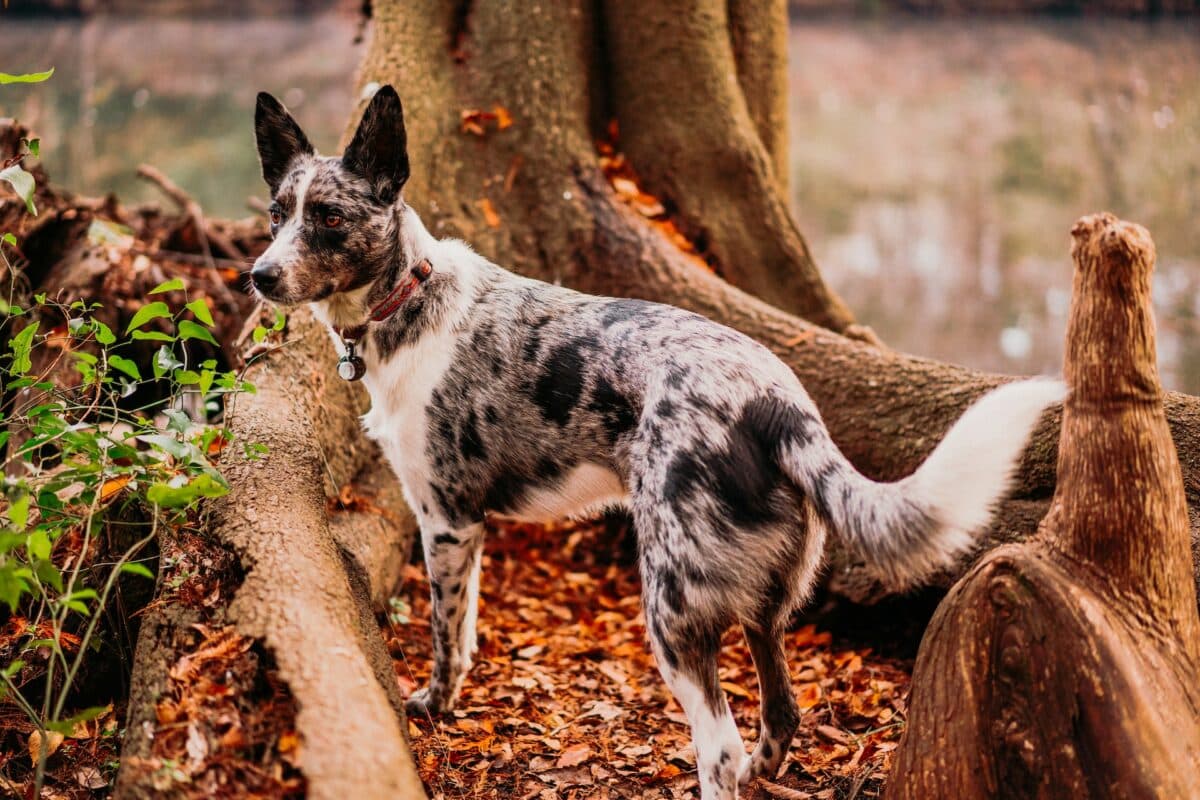
If you’re looking for a breed that’s as tough as nails and ready to work, the Texas Heeler might just be your perfect match.
This breed is a cross between two of the most resilient working dogs in the world – the Australian Cattle Dog and the Australian Shepherd.
Australian Cattle Dog
The Australian Cattle Dog, also known as the Blue Heeler, was originally bred in Australia to help farmers herd cattle in the harsh, unforgiving terrain of the Australian outback. These dogs needed to be tough, agile, and able to withstand the intense heat and dust of the Australian landscape.
The breed’s signature blue coat is a result of its crossbreeding with the Dingo, a wild dog native to Australia. The breed was first introduced to the United States in the 1940s and quickly became a favorite among American ranchers for their intelligence, loyalty, and ability to work long hours in tough conditions.
Australian Shepherd
The Australian Shepherd, on the other hand, was bred for a slightly different purpose. Originally known as the Spanish Shepherd or Basque Shepherd, the breed was brought to the United States by Basque shepherds who immigrated from Europe to work in the American West. In other words, they are not from Australia, as the name suggests.
These dogs quickly made a name for themselves as versatile and adaptable herding dogs, able to work with a variety of different livestock and in a range of different climates.
They were also known for their intelligence and obedience, making them a popular choice for dog trainers and obedience competitors.
Crossbreeding: The Birth of the Texas Heeler
It wasn’t long before breeders in Texas saw the potential of crossing these two incredible breeds. By combining the Australian Cattle Dog’s toughness and endurance with the Australian Shepherd’s adaptability and intelligence, they created a breed that could handle just about any task thrown their way.
The Texas Heeler quickly became a favorite among ranchers, who appreciated the breed’s ability to herd cattle, protect livestock, and work long hours without tiring.
But it wasn’t long before the breed’s talents were recognized outside of the ranching world – today, the Texas Heeler is also a beloved companion dog known for its loyalty, playfulness, and high-energy personality.
The Original Purpose: Working Hard and Herding Cattle
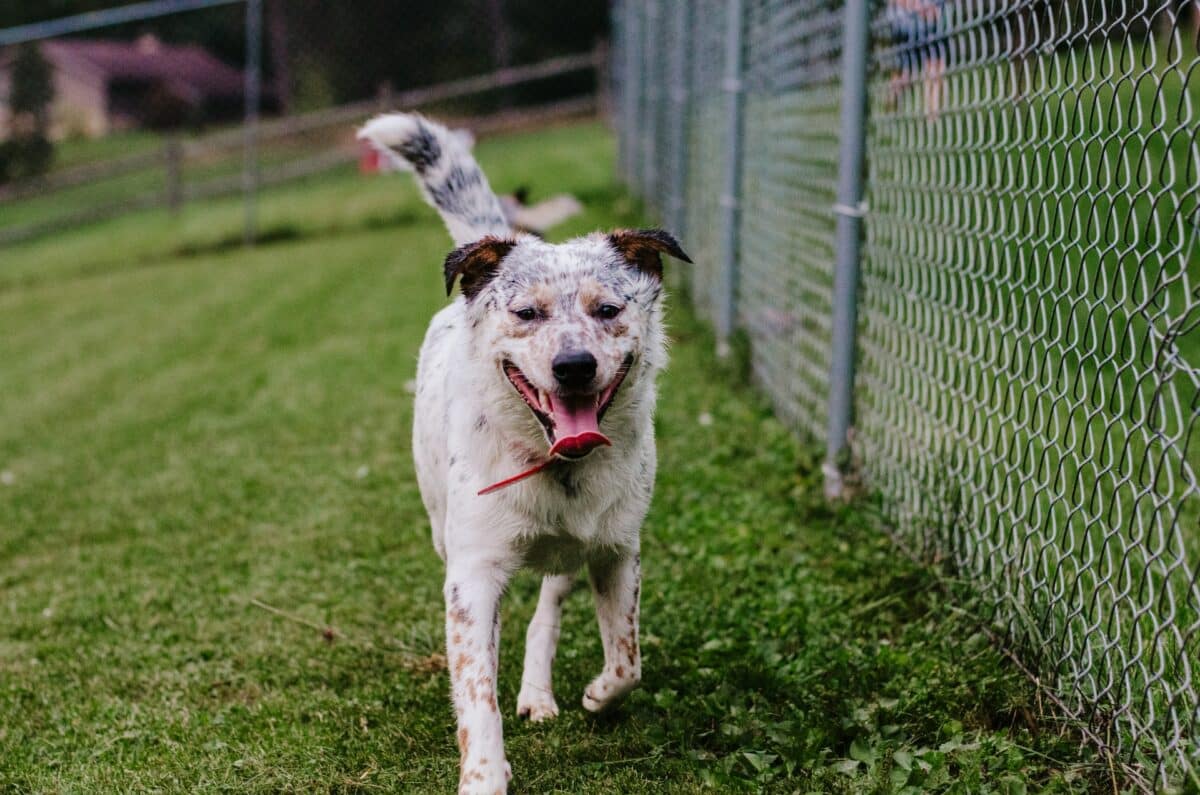
As with both parent breeds, the Texas Heeler was originally bred as a working dog – and that’s still where they truly shine. These dogs are incredibly intelligent and capable, making them a perfect match for a range of working environments.
Whether you’re a rancher in need of a tough, resilient dog to herd cattle or a search and rescue team in need of an agile, versatile partner, the Texas Heeler has what it takes to get the job done.
Despite their working roots, however, Texas Heelers also make wonderful family pets. With their loyalty, high energy levels, and playful personalities, they’re perfect for families who love spending time outdoors and want a companion who can keep up with their active lifestyle.
Size, Coat, and Color
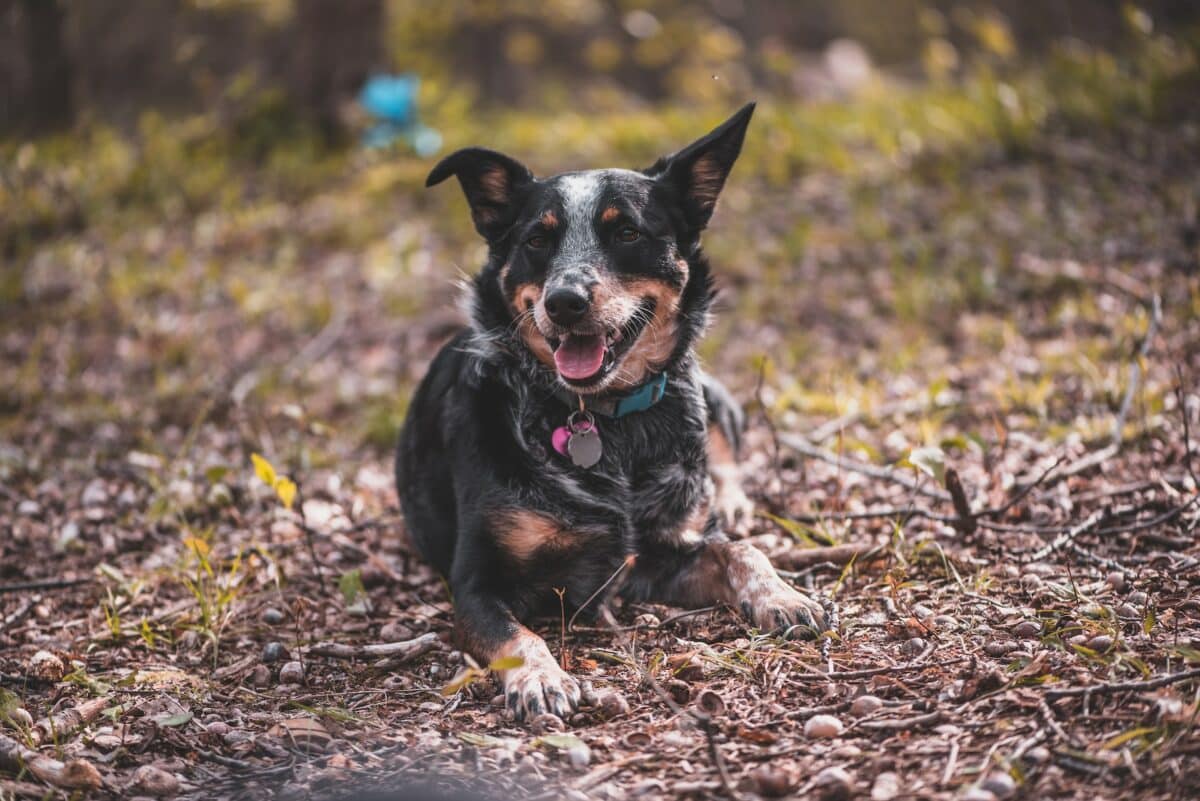
When it comes to physical appearance, the Texas Heeler is an eye-catching breed that turns heads wherever it goes.
From its medium-sized and muscular build to its short and dense coat, there are many unique features that make the Texas Heeler stand out from other dogs.
Size
The Texas Heeler is a medium-sized breed. It typically weighs between 30 to 50 pounds and stands around 18 to 22 inches at the shoulder.
Their size makes them agile and nimble enough to move quickly over rough terrain. Nonetheless, they are still strong and sturdy enough to handle the demands of herding or other working activities.
In comparison to the Australian Cattle Dog, which is one of the breeds that make up the Texas Heeler, the Texas Heeler is slightly larger and more muscular. This additional size and strength make them better suited for tasks such as herding or guarding larger livestock.
Coat
The Texas Heeler’s coat is another unique feature that sets it apart from other breeds. The coat is typically short and dense, providing protection from the elements while also being easy to maintain. The coat’s density also helps protect the dog from injuries while working in rugged terrain.
In comparison to the Australian Shepherd, which is the other breed that makes up the Texas Heeler, the Texas Heeler’s coat is shorter and less prone to matting. This makes them better suited for working in hot and humid conditions.
Color
The Texas Heeler’s coat color is one of its most distinctive features. It comes in a range of colors and combinations that can include blue, red, black, and tan.
These unique combinations add to the breed’s striking appearance and make them easily recognizable in a working environment.
In comparison to the Australian Cattle Dog, which typically has a blue or red coat, the Texas Heeler’s coat can also include black and tan markings. This wider range of colors and markings makes them a more diverse and eye-catching breed.
Why Their Size, Coat, and Color Matter
The Texas Heeler’s size, coat, and color are not just for show. They are also functional aspects of the breed that make them perfectly suited for their role as working dogs.
Their size and build allow them to move quickly and easily over rough terrain. Meanwhile, their dense coat provides them with protection from the elements.
Their range of colors and markings also makes them easy to spot in a working environment, which is particularly important when working with livestock that may be difficult to see in certain lighting conditions.
But beyond their functionality, the Texas Heeler’s size, coat, and color also add to their overall appeal as a breed. Their striking appearance is sure to turn heads and capture hearts, whether you’re looking for a working dog or simply a loyal and loving companion.
Fun Facts

- The Texas Heeler is also known as the Queensland Heeler or the Australian Heeler.
- The Australian Cattle Dog was originally bred in the 1800s to handle the harsh conditions of the Australian Outback.
- The Australian Shepherd, despite its name, actually originated in Europe and then developed in the United States in the late 1800s and was used for herding and other farm work.
- The Texas Heeler’s coat can come in a range of patterns, including merle, speckled, and solid colors.
- The Texas Heeler is known for its intense loyalty to its owner and makes a great family pet.
- Due to their high energy levels, the Texas Heeler requires a lot of daily exercise and mental stimulation to keep them happy and healthy.
The Texas Heeler’s Personality Traits
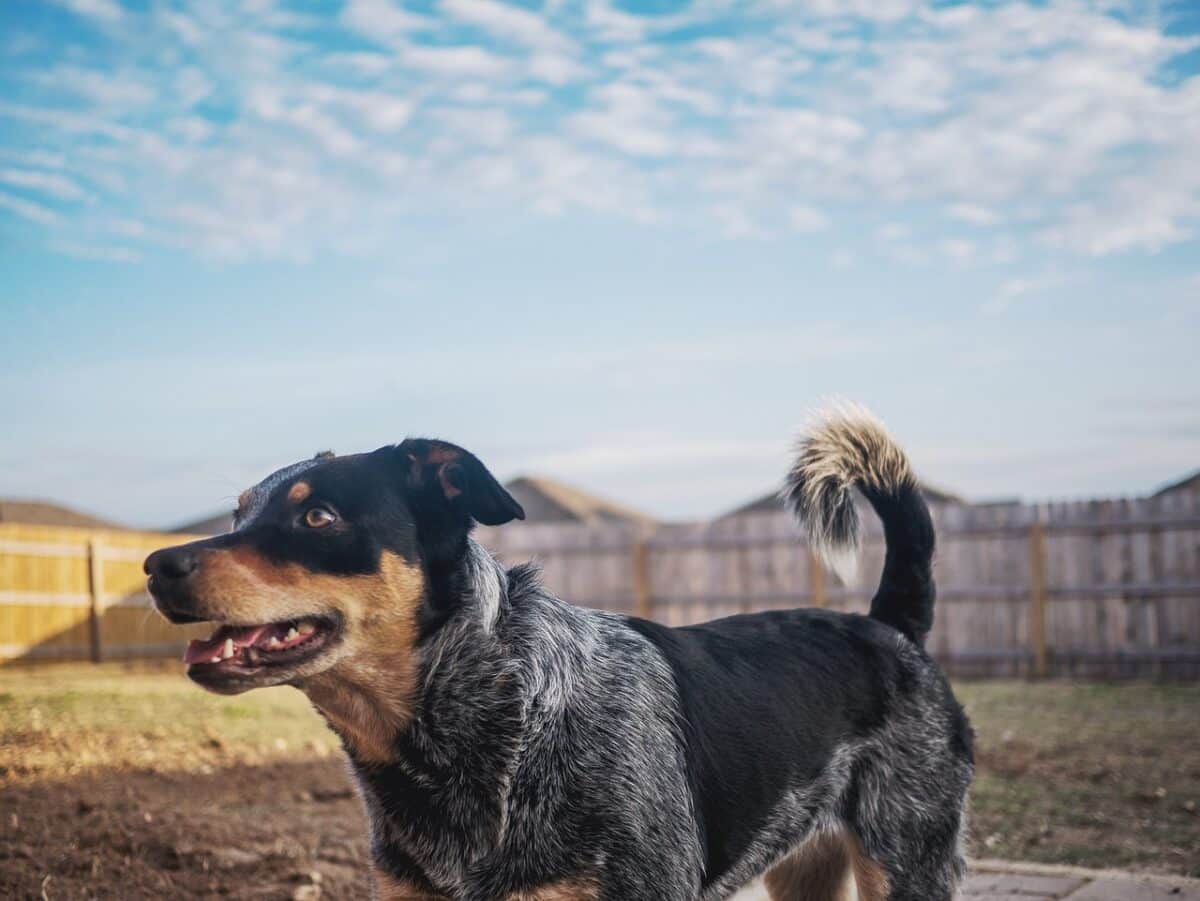
Are you in search of a four-legged companion who is both intelligent and fiercely loyal? Look no further than the Texas Heeler!
As we mentioned earlier, this breed is a cross between the Australian Cattle Dog and the Australian Shepherd, resulting in a dog that is as tough as nails, yet affectionate as a lamb.
Let’s take a closer look at the different aspects of their temperament!
Intelligent and Loyal
The Texas Heeler’s intelligence is truly impressive. They are quick learners, able to pick up new commands and tasks with ease.
This breed is renowned for its loyalty, and they are fiercely protective of their owners and their families. Texas Heelers are frequently referred to as “velcro dogs” due to their strong affinity for staying close to their owners throughout various activities. They make excellent companions and will follow their owners everywhere.
Protective and Playful
The Texas Heeler’s protective nature is a result of its breeding as a working dog. They are instinctively wary of strangers, but proper socialization can help them to be friendly with anyone.
The Australian Cattle Dog, one of the Texas Heeler’s parent breeds, is known for its toughness and tenacity.
The Australian Shepherd, the other parent breed, is known for its intelligence and affectionate nature. Resultantly, the Texas Heeler combines the best of both breeds, resulting in a dog that is tough yet playful and friendly.
High Energy Levels
The Texas Heeler is a high-energy breed that requires plenty of exercise and mental stimulation. They are not the type of dog that can be left alone all day, as they will become bored and destructive.
These dogs need plenty of playtime, walks, and training sessions to keep them engaged and happy. If you’re an active person or family, the Texas Heeler will keep up with you every step of the way.
Need For Exercise and Stimulation
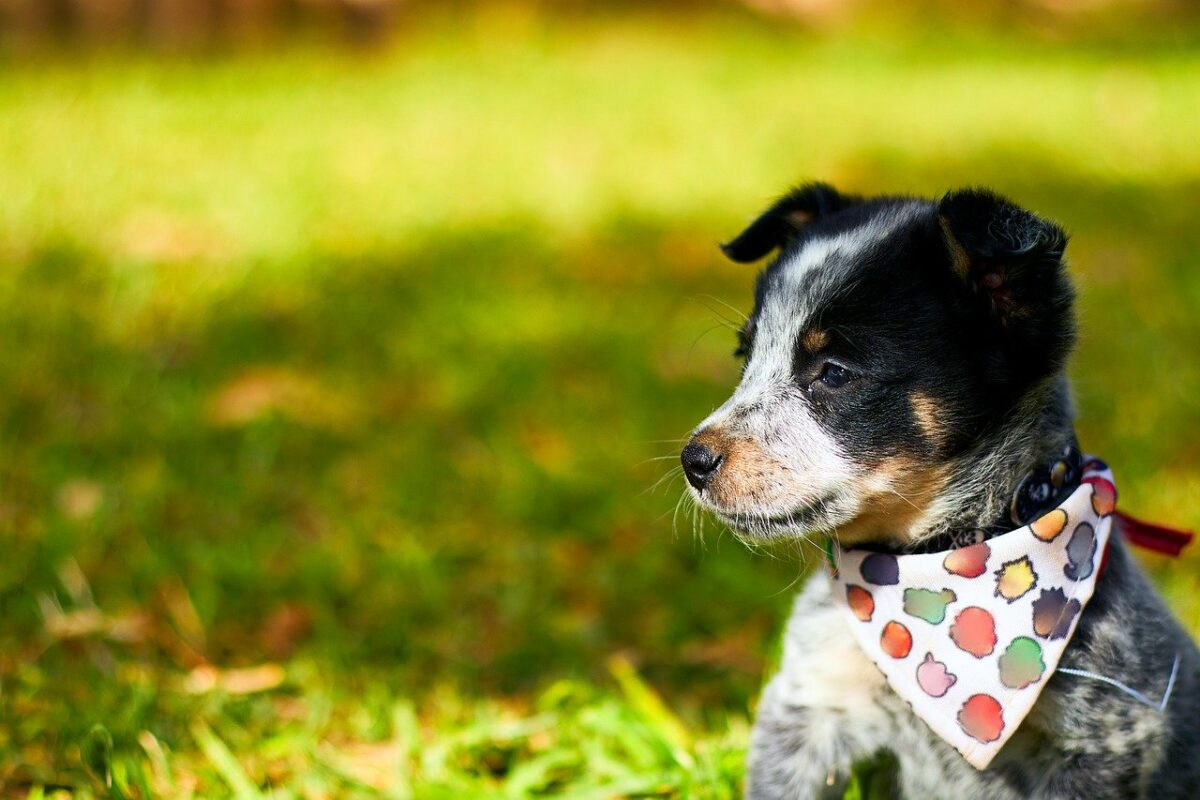
The Texas Heeler is a breed that is well-known for its high energy levels and boundless enthusiasm. These dogs are like an energizer bunny – they just keep going and going.
As such, they require a lot of exercise and mental stimulation to keep them healthy and happy.
The Importance of Exercise
When it comes to the Texas Heeler, exercise is non-negotiable. This breed was originally bred for work and therefore has a strong work ethic ingrained in its DNA. They have a lot of energy to burn off, and without an outlet for that energy, they can become restless, anxious, and destructive.
Think of your Texas Heeler like a sports car. If you don’t take it out for a spin and let it stretch its legs, it will start to break down. Similarly, if you don’t give your Texas Heeler enough exercise, they will become bored, frustrated, and may even start to act out.
The type and amount of exercise your Texas Heeler needs will depend on their age, weight, and overall health. However, as a general rule, they need at least an hour of physical activity each day. This can include walks, runs, hikes, or playtime in the backyard.
The Importance of Mental Stimulation
In addition to physical exercise, the Texas Heeler also needs mental stimulation. These dogs are highly intelligent and crave mental challenges to keep their minds sharp and engaged.
Picture your Texas Heeler like a puzzle. If you don’t give them something to solve, they will start to create their own problems. This can include destructive behaviors like chewing, digging, and barking.
To keep your Texas Heeler mentally stimulated, consider engaging them in activities like puzzle toys, obedience training, or agility classes. These activities provide your dog with mental challenges. It can likewise help strengthen the bond between you and your furry friend.
The Consequences of Neglecting Exercise and Stimulation
If you neglect your Texas Heeler’s need for exercise and stimulation, there can be serious consequences. These dogs can become anxious, and depressed and may even develop health issues like obesity or joint problems.
Imagine a Texas Heeler cooped up inside all day, bored out of their mind. It’s like keeping a racehorse in a stall – they were meant to run, and without that outlet, they will suffer. The last thing you want is for your furry friend to become unhappy or unhealthy due to neglect.
Summary
The Texas Heeler is a breed that requires a lot of exercise and mental stimulation to stay happy and healthy. Without it, they can become anxious, depressed, and destructive.
So, make sure to provide your Texas Heeler with plenty of opportunities to burn off energy and keep their minds engaged. They’ll thank you with wagging tails and lots of love.
Grooming and Health
Taking care of a Texas Heeler is no small task – it requires dedication and responsibility to keep these energetic dogs healthy and happy.
Dietary Needs
As with any dog, a Texas Heeler’s diet plays a crucial role in their overall health and well-being. These dogs have high energy levels, which means they require a nutrient-dense diet that provides them with the energy they need to stay active.
When selecting food for your Texas Heeler, it’s important to choose a high-quality, balanced dog food that contains a mix of protein, fat, and carbohydrates.
Look for foods that list meat as the first ingredient, as this provides the necessary protein for muscle growth and maintenance.
It’s also important to monitor your Texas Heeler’s food intake and avoid overfeeding them, as these dogs can be prone to obesity. This can be especially challenging as these dogs have a high metabolism and are constantly on the move, but it’s important to maintain a healthy weight to avoid potential health issues down the line.
Grooming Requirements
A Texas Heeler’s grooming needs are relatively low maintenance, thanks to their short, dense coats. However, they do require regular brushing to keep their coat healthy and shiny.
Brushing your Texas Heeler once a week with a slicker brush or shedding blade will help remove any loose fur and keep their coat looking neat and tidy. Bathing should be done as needed, but be careful not to overdo it. Too much bathing can strip the natural oils from their coat.
In addition to brushing, it’s important to keep your Texas Heeler’s nails trimmed and ears clean to prevent any potential infections.
Importance of Regular Veterinary Checkups
Regular veterinary checkups are crucial to maintaining your Texas Heeler’s health and preventing potential health issues from becoming serious.
It’s recommended that Texas Heelers visit the vet at least once a year for a checkup, vaccinations, and preventative care.
During these checkups, the vet will perform a physical exam to check for any abnormalities and may recommend bloodwork or other diagnostic tests to ensure that your dog is in good health. This is also a good time to discuss any concerns you may have about your dog’s diet, exercise routine, or behavior.
By staying on top of your Texas Heeler’s health care needs, you can help ensure that they live a long, healthy, and happy life.
Texas Heeler as a Pet: A Loyal Companion for Your Family
If you’re looking for a loyal and energetic companion for your family, the Texas Heeler may just be the breed for you.
With their friendly personalities and high energy levels, these dogs can make great pets for the right families.
A Family-Friendly Companion
The Texas Heeler can be an excellent family pet, thanks to their friendly and affectionate personalities. They are known to form strong bonds with their owners and will often follow them around the house, seeking attention and affection.
While they can be wary of strangers, proper socialization and training can help them learn to interact with new people in a friendly manner.
Compatibility with Children and Other Pets
The Texas Heeler can be a great companion for children, thanks to its playful and energetic nature. They love to play and run around and will often engage in games of fetch or chase with kids.
However, it’s important to supervise interactions between children and dogs and to teach children how to interact with dogs in a safe and respectful manner.
The Texas Heeler can also get along well with other pets in the household, especially if they are socialized with them from a young age. They can become friends with cats, other dogs, and even small animals like rabbits or guinea pigs, as long as they are introduced properly and given time to get used to each other’s presence.
Finding the Right Breeder and Socializing Your Dog
If you’re considering getting a Texas Heeler as a pet, it’s important to find a reputable breeder who breeds for health and temperament.
You’ll want to ask the breeder about the health and temperament of the dog’s parents and any potential health issues to be aware of. A good breeder will also socialize their puppies from a young age, exposing them to different environments, people, and animals, to aid their growth into well-adjusted and confident dogs.
Socialization is also important for the Texas Heeler, as it can help prevent behavior problems like aggression or anxiety.
You’ll want to expose your dog to a variety of people, animals, and environments from a young age. You must also continue to expose them to a variety of situations throughout their life. This can help them become well-adjusted, friendly, and confident pets.
Conclusion
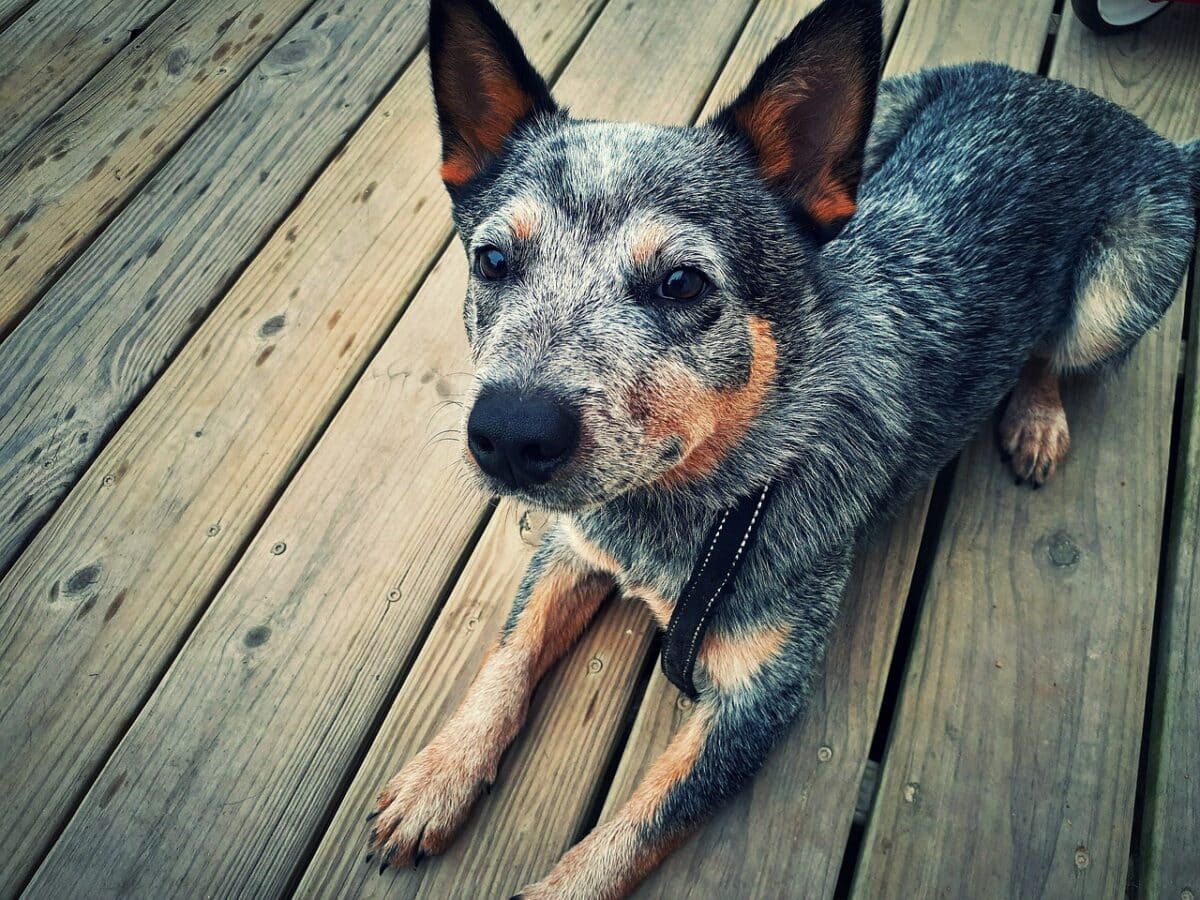
All in all the Texas Heeler is one of the most loving dogs you could get. Because of their roots, the Australian Shepherd and the Australian Cattle Dog, they have a strong drive to work. As a result, you need to provide them with large amounts of physical and mental exercise to ensure that they stay happy – if not, they might become depressed or develop destructive behaviors. If you’re up for this, though, they will grant you endless amounts of love and fun!
They become extremely attached to their owners and are therefore often referred to as “velcro dogs” as they follow their pack leader everywhere. Because of their high energy levels and playful personalities, they make excellent family pets – they’re especially good with children and love playing fetch.
Thank you for reading this article! If this was enough dog-business for you, continue your exploration of animals by reading about cats, such as the British Shorthair or the Siamese Cat.
Join our Forum for free today!

- Terrifying Encounter Between Man and Eastern Diamond Rattlesnake (Video) - July 26, 2024
- Adorable Baby Elephant Playing in Bathtub - July 26, 2024
- Dog Breed Comparison: American Staffordshire Terrier vs. Pitbull - July 26, 2024

